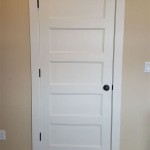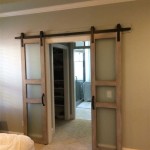How to Know Your Interior Design Style
Identifying one's interior design style can feel like navigating a complex and ever-changing landscape. The sheer volume of available information and inspiration, from magazines and websites to social media platforms, can be overwhelming. However, understanding your preferences in interior design is crucial for creating a space that is not only aesthetically pleasing but also reflects your personality and caters to your lifestyle. This process involves a combination of self-reflection, exploration, and a willingness to experiment.
The purpose of defining your style is not to confine yourself to a rigid set of rules, but rather to provide a framework for making informed decisions about furniture, color palettes, textures, and overall layout. By understanding the core elements of different design styles and how they resonate with you, you can curate a home that is both functional and visually harmonious.
1. Self-Reflection and Lifestyle Assessment
The first step in discovering your interior design style is to engage in deliberate self-reflection. This involves examining your personal preferences, values, and lifestyle. Consider what aspects of your current living space you appreciate and what elements you find lacking. What makes you feel comfortable and at peace? What inspires you creatively?
Begin by analyzing your existing wardrobe. The colors, patterns, and textures you gravitate toward in your clothing often provide valuable insights into your aesthetic preferences. Do you prefer neutral tones or bold, vibrant hues? Are you drawn to minimalist designs or more intricate, embellished styles? The answers to these questions can offer clues about your preferred color palettes and design sensibilities.
Next, consider your lifestyle and daily routines. How do you spend your time at home? Are you an avid entertainer, a home-office worker, or a dedicated family person? Your lifestyle will significantly impact the functionality and layout of your space. For example, if you frequently host guests, a spacious and well-appointed living area may be a priority. If you work from home, a dedicated and organized workspace is essential.
Think also about your hobbies and interests. Are you passionate about art, music, literature, or travel? Incorporating elements that reflect your passions can personalize your space and make it feel more authentic. For instance, a book lover might prioritize a comfortable reading nook with ample shelving, while an art enthusiast may dedicate wall space to showcasing their collection.
Finally, consider the architectural style of your home. While you are not obligated to adhere strictly to the original design, understanding the building's inherent characteristics can inform your design choices and help you create a cohesive and harmonious look. A traditional Victorian home, for example, might lend itself well to classic or eclectic styles, while a modern loft could be better suited to minimalist or industrial aesthetics.
2. Exploring Different Interior Design Styles
Once you have a better understanding of your personal preferences and lifestyle, it is time to explore the broad spectrum of interior design styles. Familiarize yourself with the key characteristics of each style, including their defining features, common color palettes, preferred materials, and typical furniture choices. This exploration will help you identify which styles resonate with you most strongly.
Some common interior design styles include:
Minimalist:
Characterized by clean lines, simple forms, neutral colors, and a focus on functionality. Clutter is minimized, and spaces are designed to feel open and airy.Modern:
Emphasizes clean lines, geometric shapes, and a neutral color palette, often incorporating natural materials such as wood, glass, and metal.Contemporary:
A constantly evolving style that reflects current trends, often incorporating elements from various design movements.Traditional:
Inspired by classic European designs, featuring ornate details, rich colors, and luxurious fabrics.Bohemian:
A free-spirited and eclectic style that embraces individuality, mixing and matching patterns, textures, and colors.Industrial:
Inspired by factories and warehouses, featuring exposed brick, concrete, metal, and reclaimed wood.Farmhouse:
A cozy and inviting style that evokes a sense of rustic charm, often incorporating natural materials, vintage accents, and comfortable furnishings.Scandinavian:
Emphasizes functionality, simplicity, and natural light, incorporating light colors, natural materials, and cozy textures.Coastal:
Inspired by the ocean and beach, featuring light and airy colors, natural textures, and nautical accents.Mid-Century Modern:
A design movement from the mid-20th century, characterized by clean lines, organic shapes, and a focus on functionality.
Utilize online resources such as Pinterest, Houzz, and interior design blogs to gather inspiration and visualize different styles. Create mood boards or digital collections of images that appeal to you. Pay attention to the colors, textures, furniture pieces, and overall atmosphere that you find attractive.
Do not be afraid to experiment and combine elements from different styles. Many successful interior designs are a blend of several styles, creating a unique and personalized aesthetic. The goal is to create a space that reflects your individual taste and meets your specific needs.
3. Identifying Recurring Themes and Preferences
After you have explored various interior design styles and gathered a collection of images that inspire you, it is time to analyze your findings and identify recurring themes and preferences. Look for patterns in the colors, textures, furniture styles, and overall atmosphere that you are consistently drawn to.
Examine your mood boards and ask yourself the following questions:
- Which colors appear most frequently? Are you drawn to warm, earthy tones or cool, muted shades?
- What types of textures do you find appealing? Do you prefer smooth, sleek surfaces or rough, tactile materials?
- What styles of furniture do you gravitate toward? Do you prefer modern, minimalist pieces or more ornate, traditional designs?
- What is the overall atmosphere that you want to create in your home? Do you want a space that feels calm and relaxing, or one that is vibrant and energizing?
By answering these questions and analyzing your visual preferences, you can begin to narrow down your interior design style. You may find that you are drawn to a specific style, such as minimalist or bohemian. Alternatively, you may discover that you prefer a combination of styles. For example, you might appreciate the clean lines of modern design but also the warmth and texture of farmhouse style.
Don't be afraid to create your own unique style by blending elements from different design movements. The most important thing is to create a space that reflects your personality and meets your needs. It is also acceptable to have different styles for different rooms in your house. A formal dining room might reflect a traditional style, while a recreational room could reflect something more modern.
Consider seeking professional Guidance. If you are struggling to define your interior design style, consider consulting with an interior designer. A qualified professional can help you analyze your preferences, explore different styles, and create a cohesive design plan that meets your needs and budget. They can also provide valuable insights and guidance on furniture selection, color palettes, and overall space planning.
Defining your interior design style is an ongoing process. As your tastes and lifestyle evolve, your design preferences may also change. Embrace experimentation and be willing to adapt your style as needed. The ultimate goal is to create a home that you love and that reflects your unique personality.
Ultimately, the process of discovering your interior design style is a journey of self-discovery. By combining self-reflection, exploration, and experimentation, you can create a home that is not only aesthetically pleasing but also a true reflection of who you are.

How To Figure Out What S My Design Style Worthing Court

Dear Urbaneer How Do We Establish Our Interior Design Style

How To Choose An Interior Design Style The Beauty Revival

Find Your Interior Design Style Quiz Southern Motion

What Is My Interior Design Style Here S How To Find Out Welsh Studio

How To Find Your Unique Personal Interior Design Style Dwell Beautiful

What S Your Design Style Home Interior Styles Quiz Decor

A Guide To Interior Design Styles How Find Your Unique Home Decor Style Primer

How To Choose An Interior Design Style The Beauty Revival

What Is My Interior Design Style Quiz Finding Your This Year
Related Posts








